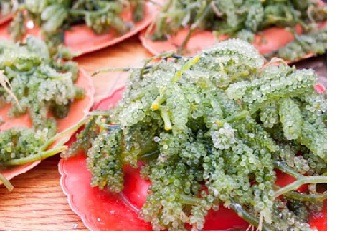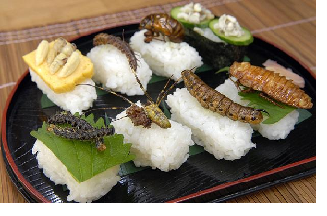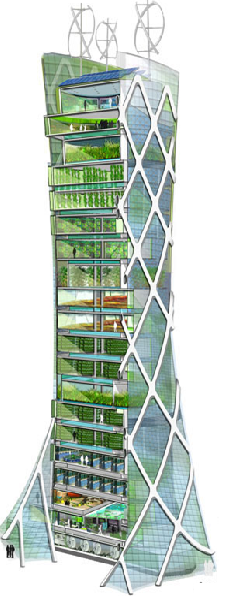
Our ancestors had two distinct food acquisition roles: Hunter and Gatherer. If the animals were scarce, fruits and vegetation would hold us over. For a time, that was all we needed to gain Nature’s bounty. But then we migrated, populated new territories, farmed crops and built cities. Any new life forms found in our travels were soon added to the menu. After the industrial revolution, as our global population exploded, there wasn’t an animal in the sky, sea or field that we hadn’t tasted. But mass consumption and extinction have claimed several species. Wildlife and farmed animals alike can no longer sustain human demand, there is little virgin land left open to agriculture, oceans are being overfished and futuristic super pills packed full of nutrients still seem out of our reach. So how will we feed the mouths of billions as our resources continue to grow scarce?
 A scientifically intriguing suggestion that often comes up isSynthetic Meat, also known as Lab Meat. Before we come to understand the process, we should speculate its necessity. China and India both have a large emerging middle class. When GDP goes up, so does demand for meat and a westernized diet. Raising cattle requires an exorbitant amount of water, food and fuel. Approximately 100 pounds of inefficient resources go towards producing 15 pounds of edible meat. Alternatively, the process of developing synthetic meat involves very few cells being cultivated into large portions within a lab. Specialized proteins applied to these base muscle cells help them grow and duplicate. One animal’s cells could realistically provide millions of pounds of in vitro meat, in turn feeding the world’s population. If brought to market and made commercially viable, synthetic meat would produce 90% fewer greenhouse gases than farm raised meat, use 99% less land and require 85-90% less water usage. Compared to an agriculture that is fast becoming too expensive for consumers to support, synthetics might very well be the best economic option.
A scientifically intriguing suggestion that often comes up isSynthetic Meat, also known as Lab Meat. Before we come to understand the process, we should speculate its necessity. China and India both have a large emerging middle class. When GDP goes up, so does demand for meat and a westernized diet. Raising cattle requires an exorbitant amount of water, food and fuel. Approximately 100 pounds of inefficient resources go towards producing 15 pounds of edible meat. Alternatively, the process of developing synthetic meat involves very few cells being cultivated into large portions within a lab. Specialized proteins applied to these base muscle cells help them grow and duplicate. One animal’s cells could realistically provide millions of pounds of in vitro meat, in turn feeding the world’s population. If brought to market and made commercially viable, synthetic meat would produce 90% fewer greenhouse gases than farm raised meat, use 99% less land and require 85-90% less water usage. Compared to an agriculture that is fast becoming too expensive for consumers to support, synthetics might very well be the best economic option.
But food is also about taste! The biggest hurdle artificial meat faces is the lack of blood and fat cells that give meat its unique flavor. Many animal rights activists will be happy to know that lab meat is never connected to a brain, nervous system or any form of consciousness, but the catch is that the muscles produced never exercise or gain that natural leanness found in active creatures. If the progress of the technology keeps accelerating at its current pace, perhaps we can address these issues and make a viable, inexpensive supermarket product.
It’s worth noting, that a cluster of new and intriguing ethical issues arise with this technology. For instance, will it potentially end the farming culture in America altogether? Would it be morally problematic if people wanted to eat human flesh produced in this manner? If this cannibal cuisine trend arose, would celebrities sell their skin samples as a luxury food? What sudden biodiversity affects could occur, if most of the land and animals return to a “wild” un-farmed state? Most importantly, because In-Vitro meat has yet to be placed on the market, what are the potential health risks we need to investigate?
It’s apparent that many issues have yet to be addressed, and demands for new food might arrive sooner than we’re ready to answer them. So what are the formidable contenders to synthetic meat that could theoretically fill the void?

Algae seems to be a sensible candidate. The single-cell organisms can grow very rapidly at sea. The bio-fuel produced from Algae already has shipping and airline companies looking into the viability of algae oil. Algae farms could produce up to 10,000 gallons of ethanol biofuel per acre, compared to 350 gallons from maize. Its energy uses aside, algae can also act as a fertilizer. Kelps fix CO2 in the atmosphere and provide sugars, oils and fats. Algae may hold a rather low rank on the food chain, but China and Japan already widely consume it in the form of seaweeds, and animals of all sizes from shrimp to blue whales eat it regularly. The hurdle seems to be in diversifying the culinary styles in which we might enjoy it. As soon as a few trendy restaurants cultivate Algae based specials on their menus, we may see a new kind of green revolution.
 Leaving no stone unturned, we can’t forget the obvious option: Insects! The human population is easily dwarfed by insects, both in biomass and numbers. Eating insects, or Entomophagy, is already widely practiced across the world (Mexico has a popular Grasshopper taco.) Spiders, worms, ants and beetles are eaten across Latin America, Asia and Africa. Compared to our current livestock, insect farms require far less land, are far more efficient at converting plants into edible meat and emit fewer greenhouse gases. They are rich in proteins, low in fat and high in calcium and iron. They can even flourish on waste and paper, offering an auxiliary cleaning service. The ants crawling all over your picnic may soon become the main course themselves.
Leaving no stone unturned, we can’t forget the obvious option: Insects! The human population is easily dwarfed by insects, both in biomass and numbers. Eating insects, or Entomophagy, is already widely practiced across the world (Mexico has a popular Grasshopper taco.) Spiders, worms, ants and beetles are eaten across Latin America, Asia and Africa. Compared to our current livestock, insect farms require far less land, are far more efficient at converting plants into edible meat and emit fewer greenhouse gases. They are rich in proteins, low in fat and high in calcium and iron. They can even flourish on waste and paper, offering an auxiliary cleaning service. The ants crawling all over your picnic may soon become the main course themselves.
There are many new horizons available to us, but we should learn from the blunders we’ve made in the last century when it comes to modifying nature. For every step towards progress, we’ve suffered new dangers as well. Antibiotics kill most bacteria, only leaving the strongest and most resistant to come back in a wave of powerful vengeance. Hybrid seeds, chemical fertilizers and genetically modified crops helped us feed millions of starving people in drought stricken lands. But now the weeds have cross bred with the crops, and have become resistant to herbicides of ever increasing potency. We’re poisoning the soil and water supplies, and cannot afford to fell more forests for new farmland. The genetic modification lobby continues to promise fruits infused with vaccines, rapidly maturing animals and more efficient crops, but it might be wiser to stop combating nature and instead separate our experimentations from it.
 Zhikang Li is a Chinese plant breeder, who has spent years working with his team to produce “green super rice”. His rice produces more grain, is more resistant to droughts, floods, salty water, insects and disease and was created without any GM technology. He took the natural route, working with hundreds of farmers and researchers in several countries to cross-breed more than 250 plants into his bountiful creation. This is the way we should be interacting with nature.
Zhikang Li is a Chinese plant breeder, who has spent years working with his team to produce “green super rice”. His rice produces more grain, is more resistant to droughts, floods, salty water, insects and disease and was created without any GM technology. He took the natural route, working with hundreds of farmers and researchers in several countries to cross-breed more than 250 plants into his bountiful creation. This is the way we should be interacting with nature.Meanwhile our lab meat, insect cuisine and algae productions might be better suited in isolated Vertical Farms, encased laboratories and modernized greenhouses. Controlled environments can offer us less exposure to chemicals, pesticides and toxins. We can create a firewall between the “natural” world food supply, and our scientific efforts. That way, much like the Hunters and Gatherers of old, we’ll have two separate and equally important sources of food we can rely on!

No comments:
Post a Comment